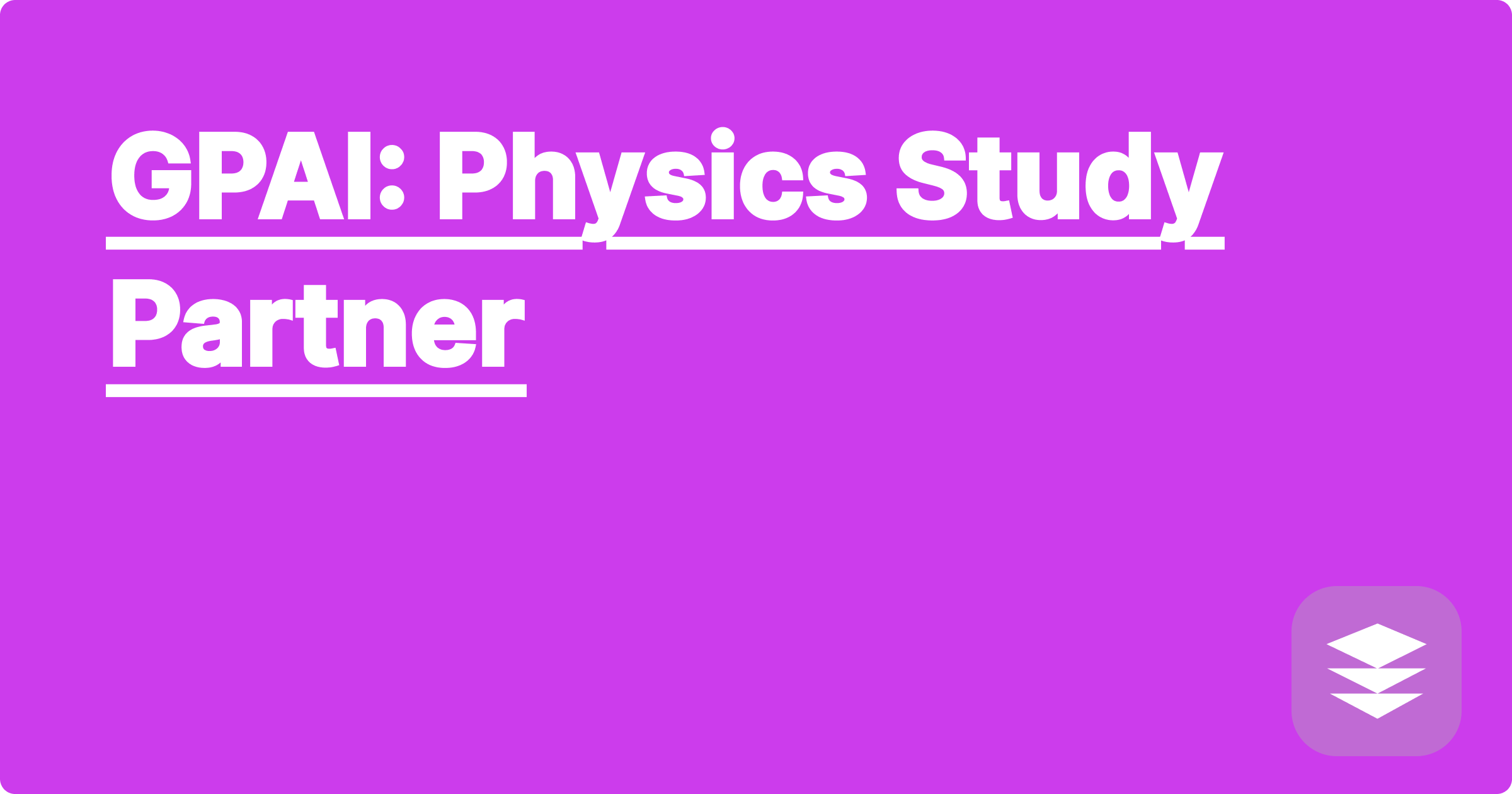
The world of STEM is a thrilling rollercoaster – exhilarating highs of discovery mixed with the gut-wrenching lows of complex problem sets and seemingly insurmountable exams. For physics students especially, the abstract nature of the subject can feel like navigating a maze in the dark. Fortunately, a new light is emerging in the form of AI-powered learning tools, offering a personalized pathway to understanding and mastery. These tools, like the hypothetical GPAI (think of it as your personal physics AI tutor), are revolutionizing how we approach learning, offering a lifeline in the often turbulent waters of academic life.
This isn't just about making studying easier; it's about unlocking your full potential. In today's competitive landscape, leveraging AI in education isn't a luxury, it's a necessity. It's about working smarter, not harder, and gaining a crucial edge in your academic journey. This blog post delves into the world of AI-powered learning, focusing on how GPAI and other similar tools can transform your physics studies, from grasping fundamental concepts to acing those daunting exams. We'll explore practical examples, share effective strategies, and ultimately empower you to take control of your learning and achieve academic success.
Physics, with its intricate web of theories, laws, and mathematical formulations, presents a unique set of challenges. Many students struggle to visualize abstract concepts like electromagnetism or quantum mechanics. Traditional learning methods often fall short in providing the personalized support needed to overcome these hurdles. Textbooks can be dense and impersonal, while lectures, however engaging, can't always cater to individual learning paces and styles. This gap between the curriculum's demands and the student's individual needs creates a breeding ground for frustration and can lead to a decline in motivation and performance. Furthermore, the sheer volume of information and the pressure to keep up can be overwhelming, leaving students feeling lost and discouraged.
AI-powered platforms like GPAI offer a transformative solution to these challenges. Imagine having a study partner that can analyze your strengths and weaknesses, tailor a study plan specifically for you, and provide targeted practice questions on the areas you need to focus on most. GPAI does precisely that. It utilizes sophisticated algorithms to understand your learning patterns, identify your knowledge gaps, and offer personalized recommendations. Similarly, tools like Wolfram Alpha can be invaluable for tackling complex calculations and visualizing mathematical concepts. ChatGPT and Claude can be used to break down complex theories into simpler, more digestible explanations, acting as a virtual tutor available 24/7. These tools aren't meant to replace traditional learning methods, but rather to augment them, providing a personalized and adaptive learning experience.
Let's walk through how you might use GPAI for studying electromagnetism. First, you would input your current course materials, perhaps your textbook chapters or lecture notes. GPAI then analyzes this information and creates a personalized study plan based on the concepts covered. As you progress, GPAI tracks your performance on practice questions, identifying your areas of strength and weakness. Suppose you're struggling with Faraday's Law. GPAI will recognize this and provide you with additional resources, like targeted practice problems and simplified explanations, to help you master the concept. It’s like having a tutor who pinpoints exactly where you're tripping up and provides the specific support you need.
Consider the challenge of solving a complex kinematics problem. Instead of spending hours flipping through textbooks or searching online forums, you can use Wolfram Alpha to quickly solve the equations and visualize the trajectory of the object. Or imagine grappling with the intricacies of quantum mechanics. ChatGPT can provide a conversational explanation of concepts like superposition and entanglement, breaking down the complex jargon into understandable terms. Furthermore, GPAI can generate practice problems tailored to your specific weaknesses, allowing you to hone your problem-solving skills in a targeted and efficient manner.
Integrating AI tools into your study routine requires a strategic approach. Don't rely solely on AI; instead, use it to supplement your existing study habits. Start by identifying your specific learning needs and choose the tools that best address those needs. Experiment with different platforms and find what works best for you. Remember that consistency is key. Dedicate specific time slots for using AI tools and integrate them into your regular study schedule. Don't be afraid to explore the different features each platform offers. For instance, GPAI’s personalized feedback feature can provide valuable insights into your learning progress.
In conclusion, the landscape of STEM education is evolving rapidly, and AI is at the forefront of this transformation. Tools like GPAI, Wolfram Alpha, ChatGPT, and Claude offer unprecedented opportunities to personalize and optimize your learning journey. By embracing these technologies and incorporating them strategically into your study routine, you can not only improve your understanding of complex physics concepts but also develop essential problem-solving skills and gain a significant competitive edge in your academic pursuits. Take the first step today, explore these resources, and unlock your full potential in the exciting world of physics. The future of learning is here, and it's powered by AI.